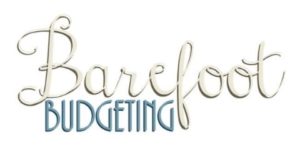*This post may contain affiliate links. As an Amazon Associate we earn from qualifying purchases.
Staying organized at tax time (or any time) can be incredibly difficult for most people. We all lead busy lives and there is always something to do. However, if you do these two tips it can make tax time a bit easier on you.
If tax season brings you dread every year, it’s time to get that under control. There is no good reason to be stressed, worried or dreading tax time each year.
It’s not good for your mental health, or physical health either.
The reason you’re probably feeling this way is that you haven’t taken the time to be organized throughout the year. However, with just a little bit of preparation, and a simple system through the year, you can regain control of your emotions and make tax time a cinch.
There are basic components you will need for tax season- receipts of payments (think receipts and paid invoices) and records of payments (think bank and credit card statements). If you have a system for filing and obtaining these items, you’re 90% done with tax prep.
For receipts of payments, you need a file for invoices and receipts you pay throughout the year. This system can be whatever works best for you.
1. Paper Files
Some people prefer keeping a physical paper trail. For physical paid invoices and receipts, you need a physical filing system that works for you. Something like an accordion-style file folder would work just fine, or a filing cabinet with folders, if you tend to have larger volumes.
How you file your receipts and invoices is up to you. There is no wrong system as long as you keep them organized and you know where to find them when you need them. Standard filing practices include categories by month, vendor name, or expense category.
Paper Record Keeping
If you also keep paper records (rather than a software bookkeeping system) you will want a way to track your expenses so you don’t have to spend hours at tax time adding up the totals. Whatever you use, at the end of each month, just be sure you total the expenses in each category and keep that total handy.
You could even staple the receipts for said category to the tally paper. You will only need the receipts for an audit, but you will need your totals so you can calculate your annual expenses at tax filing.
For the sake of simplicity, think of keeping a running list in front of folder to keep a written log list of amounts, this will make it easier to tally if you’re doing it ongoing.
2. E- files
If you have a software system for bookkeeping, the application often has a mechanism for attaching receipts directly to the payment inside of the program. (i.e. .pdf or .jpeg images can be attached to the payment for easy reference) Alternately, you can set up a filing system in files on your PC, similarly to the paper files above.
Receipts and paid invoices that have been received can be saved to the file.
Electronic Record Keeping
The easiest form of any type of electronic bookkeeping system is accounting software, but for those who are on a budget, this may not be feasible. You can use a basic spreadsheet in Excel or similar program to track expenses. Again, you will need just the annual totals for your tax filings, however, you should track these monthly for easy tax tracking.
For recording payments, you’ll also need a file (same as above; either e files or paper files) to store your bank and credit statements, (and ideally, you should attach your reconciliations to each statement) that you will also need at tax time. Following these easy steps, you can breeze right through tax time, stress free.

